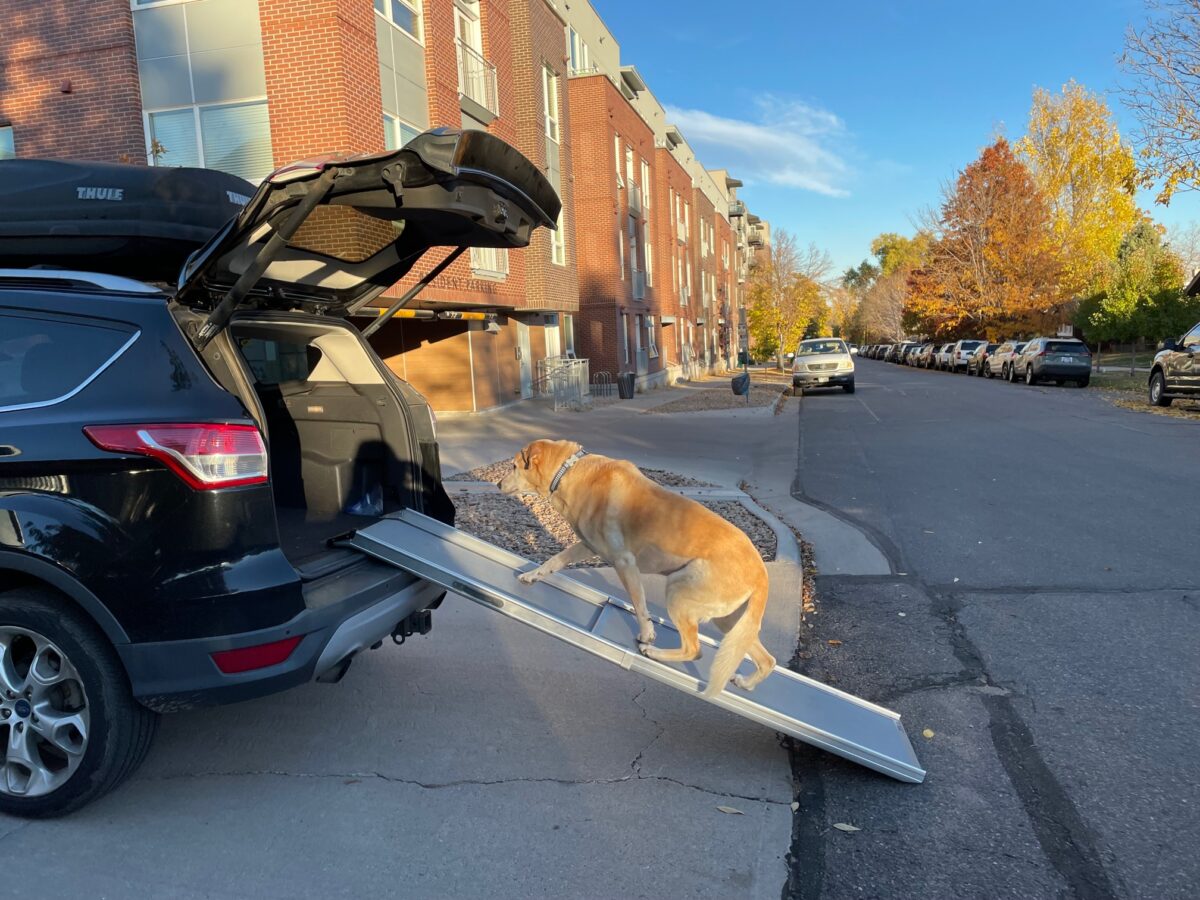My Lab mix, Rio, has always been an active dog. He spent the first eight years of his life living in a Colorado mountain town, where he could hike off-leash several times a day. He’d jump over fences and logs and run around in exuberant circles whenever meeting new friends. He could swim crazy lengths across alpine lakes to fetch his bumper and race across the shore to “protect” us from birds or squirrels.
Now he’s 11 years old, and aging is taking a toll. Rio developed arthritis in his hips and can no longer jump into the back of the car to head off on adventures. Once, he even tried jumping up and couldn’t quite make it, which was terrifying.
Fortunately, he has learned to use a ramp to get in and out of the car so that the fun hasn’t stopped (though we typically hike on flat trails around lakes and other less challenging terrain). I’ve learned that ramps can be an invaluable tool to help make a senior pet safer – and of course, more comfortable.
The key is patience – and finding the right ramp to begin with. I made the mistake of initially buying little fabric stairs, which turned out to be too close together for his long legs. They also seemed wobbly and generally unstable.
So, it was back to the drawing board.
I had better luck on my second try with a telescoping metal ramp, with a textured grip to help keep Rio from slipping. It can extend far enough that the grade isn’t too steep (he disliked A-frames in agility classes, so I figured he’d prefer a slighter incline) and then easily collapses into a smaller ramp for storage or car rides.
Now the trick was getting him used to the thing. First, we left the folded-up ramp in the house with treats on it. He would gingerly eat the treats without standing on the ramp. So we started feeding him his meals on it – once he had all four paws on the ramp. He was so happy wolfing down his dinner from a bowl that he didn’t mind standing on the contraption.
Then we extended the ramp to its full length and kept feeding treats and meals on it for several more days. We watched his body language become more relaxed on the ramp.
Soon it was time to try it outside. We ran the ramp over a couple of stairs in the backyard. Rio wanted to bypass it, but with enough treats and coaxing, he learned to quickly run down the ramp onto the grass, where he got – you guessed it! – more treats.
After several weeks, when it was time to try using the ramp to enter the car, I drove the vehicle down our steep driveway and onto the street, where the car could be flat (and there would be less of an incline for Rio to climb).
After a couple of false starts where he backed off at the last minute, we tossed treats into the back of the car, and gently led him by leash to the base of the ramp. While my husband braced against the ramp to make sure it was sturdy, I used a high-pitched, happy voice and held treats at the top of the ramp to encourage Rio.
He knew what he was supposed to do, and quickly climbed the ramp. We praised and rewarded him inside the car.
A few weeks later, we were able to take a road trip to California to visit my family, thanks to a lot of patience and positive conditioning – and a dog who loves to please us, particularly when there are tasty treats involved.
This article was reviewed/edited by board-certified veterinary behaviorist Dr. Kenneth Martin and/or veterinary technician specialist in behavior Debbie Martin, LVT.








